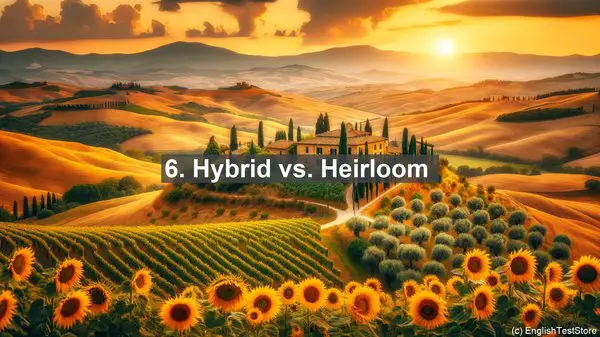Introduction
Welcome to today’s lesson on commonly confused words in agronomy and crop science. Understanding these terms is crucial for a successful career in this field. So, let’s dive in!

1. Annual vs. Perennial
Often, students get confused between annual and perennial crops. Annual crops complete their life cycle in a year, while perennial crops live for multiple years. Examples of annual crops include corn and wheat, while apple trees are a classic example of a perennial crop.
2. Fertilizer vs. Pesticide
While both fertilizer and pesticide are used in agriculture, they serve different purposes. Fertilizers provide essential nutrients to plants, promoting growth. On the other hand, pesticides are used to control pests and diseases that can harm crops.
3. Genotype vs. Phenotype
Genotype refers to the genetic makeup of an organism, while phenotype is the observable physical or biochemical characteristics. In crop science, understanding the genotype-phenotype relationship is crucial for breeding programs and crop improvement.
4. Organic vs. Inorganic
Organic and inorganic, in the context of agriculture, refer to the source of nutrients. Organic fertilizers are derived from natural sources, such as compost or manure, while inorganic fertilizers are synthetically produced. Each has its advantages and considerations.

5. Tillage vs. No-Till
Tillage involves the mechanical manipulation of soil, such as plowing, to prepare it for planting. No-till, as the name suggests, involves minimal disturbance of the soil. Both methods have their benefits, and the choice depends on various factors, including soil health and erosion control.
6. Hybrid vs. Heirloom
Hybrid and heirloom are terms used to describe plant varieties. Hybrids are the result of crossbreeding between different parent plants, often with desirable traits. Heirloom varieties, on the other hand, are older, open-pollinated varieties that have been passed down through generations.
7. Monoculture vs. Polyculture
Monoculture refers to the cultivation of a single crop in a given area, while polyculture involves growing multiple crops together. Each approach has its advantages and challenges, such as pest management and soil fertility.
8. Germination vs. Emergence
Germination is the process by which a seed sprouts and begins to grow. Emergence, on the other hand, refers to the point when the seedling breaks through the soil surface. Understanding these terms is essential when studying crop establishment and stand counts.
9. Macronutrients vs. Micronutrients
Plants require various nutrients for their growth and development. Macronutrients, such as nitrogen, phosphorus, and potassium, are needed in larger quantities. Micronutrients, like iron and zinc, are required in smaller amounts but are equally important.
10. Photosynthesis vs. Respiration
Photosynthesis is the process by which plants convert light energy into chemical energy, while respiration is the process of releasing that energy for plant growth and metabolism. These fundamental processes are the basis of plant productivity.
